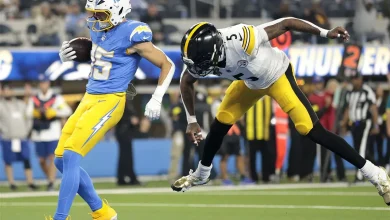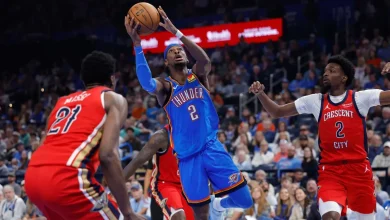As rebounding improves so does the Celtics’ record

The nadir came in the 105-103 home loss to the lowly Jazz on Nov. 3, when the Celtics surrendered 15 offensive rebounds and were outrebounded by 19 overall.
Get Starting Point
“We’re never going to be top five,” coach Joe Mazzulla said that night. “But we have to be better.”
At that point in the season, the Celtics were gobbling up just 63.6 percent of the opponent’s missed shots, ranking 29th in the NBA, and their overall rebounding percentage of 47.5 ranked 26th. They were also surrendering 18.6 second-chance points per game, ranking 27th. It was not pretty.
There has been a noticeable shift since then, however.
Over the last seven games, the Celtics rank 11th in defensive rebounding percentage (70.0) and sixth in overall rebounding percentage (52.6), and they have given up just 15.3 second-chance points per contest, ranking 13th. They have a 5-2 record over this span, too.
For the season, the Celtics rank 16th in the NBA in rebounding percentage, not too far from last season’s 11th-place standing.
After Thursday’s practice, guard Derrick White was asked to identify the area in which the team had improved the most since the start of the year. He did not hesitate.
“I think rebounding,” White said. “Obviously, we’ve got a long way to go. But at the beginning of the year, it seemed like we had a lot longer than we do now. So, I’ll say that.”
Center Neemias Queta, who is averaging a team-high 8.1 rebounds per game, said the growth truly began in the film room, where the coaches were able to provide visible examples of the cracks, and the Celtics began to have a better view of opponents’ tendencies when pursuing missed shots.
“A lot of times, rebounding is all about effort and hitting first,” Queta said, “making sure your guy doesn’t get it, go get it with two hands. Team rebounding is the main thing, and we’re all collectively trying to make an effort for those things to happen for us to get the ball.”
He said the players realized that one missed opportunity here or there might not seem like much, but that the missteps were compounded when several players had gaffes. They can add up quickly.
“Everybody looked in the mirror and just thought about making themselves better,” Queta said, “and collectively, we’re all on the same page with that.”
…
When Mazzulla was asked Thursday about his team’s substitution patterns, he pointed out that there has been no pattern. Instead, there has mostly been randomness.
Forwards Jordan Walsh and Josh Minott, for example, have essentially taken turns as starters, with Walsh stepping into the role most recently. But in Boston’s win over the Nets on Tuesday, Walsh played just over one minute in the second half, and Minott entered the game and had a big impact as the team held Brooklyn to 38 points after halftime.
Minott had 7 points and 2 rebounds in 11 second-half minutes.
“You’re seeing a group of guys that are just learning the league, learning how to execute one night, but also turn that into consistency, turn that into habits, and then just deal with the ebbs and flows of the season,” Mazzulla said. “Everyone focuses on player development as far as on-court work, but there’s a mental and a psychological aspect of the development piece of learning how to handle the league. The league is very unforgiving, from a physical standpoint, on your body, and also a mental standpoint. So Josh is a guy who takes that seriously, who understands the opportunity that he has, and he just continues to get better and better. And that’s all you can ask for.”
Adam Himmelsbach can be reached at adam.himmelsbach@globe.com. Follow him @adamhimmelsbach.





